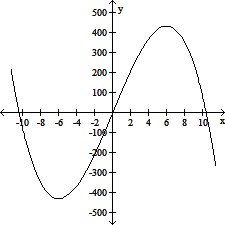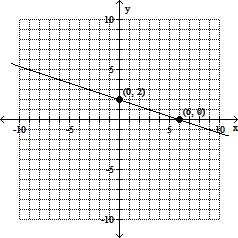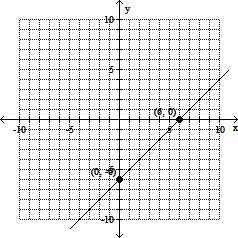Use the given graph of f(x) to find the intervals on which f'(x) > 0.
A. f'(x) > 0 on [-36, 36], f'(x) < 0 on (-?, -36] ? [36, ?)
B. f'(x) > 0 on (-?, 6], f'(x) < 0 on [6, ?)
C. f'(x) > 0 on [-6, 6], f'(x) < 0 on (-?, -6] ? [6, ?)
D. f'(x) > 0 on (-?, -6] ? [6, ?), f'(x) < 0 on [-6, 6]
Answer: C
You might also like to view...
Use the graph to find a ? > 0 such that for all x, 0 <  < ? ?
< ? ?  < ?.
< ?.

A. 8 B. -0.2 C. 0.1 D. 0.2
Graph the solution of the quadratic inequalities on a number line and write the solution in interval notation. x2 - 5x ? -6![]()
A. [3, ?)![]()
B. (-?, 2]![]()
C. [2, 3]![]()
D. (-?, 2] ? [3, ?)![]()
Graph the equation by plotting the intercepts.y =  x + 2
x + 2
A. 
B. 
C. 
D. 
Solve the problem.Find the exponential function f that models this data. Round the coefficients to the nearest hundredth.
A. f(x) = (527.34)(1.09)x B. f(x) = (567.57)(0.17)x C. f(x) = (1.09)(527.34)x D. f(x) = (0.17)(567.57)x